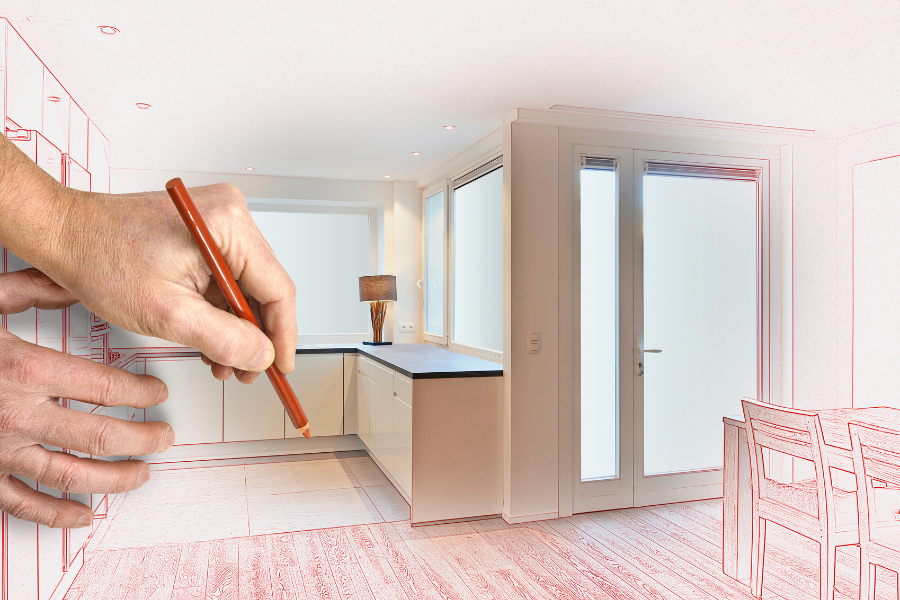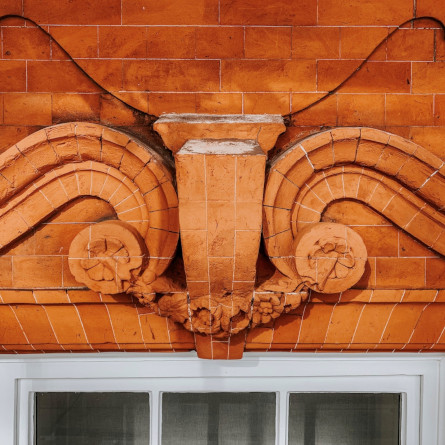If you’re a property owner in England or Wales planning renovations, extensions, or any work that affects a shared wall, you’ve likely encountered the term “party wall.”
Whether you’re a homeowner, landlord, or developer, navigating the intricacies of party wall matters can be challenging. From understanding what constitutes a party wall to knowing when you need an agreement and how to obtain one. That’s why Squarepoint Chartered Surveyors, a leading party wall surveyor in London, have curated this guide to walk you through every step of the process, from your rights and responsibilities to potential disputes.
What is a Party Wall?
A party wall is defined as a wall that stands on the lands of two or more owners and forms part of a building. It can be a wall that separates two homes in a terraced or semi-detached house, or a wall that stands between two separate properties. Party walls can also include garden walls built along a boundary – known as party fence walls.

What is a Party Wall Agreement?
A party wall agreement is a legal document between neighbouring property owners, setting out the terms for work on or near a shared boundary. Defined by the Party Wall Act 1996, this legislation applies across England and Wales and provides a clear process for avoiding and resolving disputes over party walls, boundary walls, and nearby excavations. Anyone planning building work that could affect an adjoining property should understand party wall agreements and seek professional advice to ensure compliance.
What Does the Party Wall Act Cover?
A Party Wall Notice is legally required for construction work that affects a shared wall or structure, or involves excavation near a neighbouring property. Common projects like foundation work, loft conversions, or installing damp-proof courses often trigger this requirement. Even with verbal agreement from your neighbours, a formal notice should still be served to protect all parties and ensure legal compliance.

New walls constructed astride the boundary
New walls constructed up to, but not beyond, the boundary do not require the Building Owner to obtain the Adjoining Owner’s consent, as long as no element of the new structure protrudes beyond the boundary.
Alterations to party walls or structures
This section of the Act contains 14 different types of work, including underpinning foundations, raising the party wall for a loft extension, repairing or rebuilding a party wall, cutting into or away from the party wall, and raising or rebuilding a garden party wall as part of an extension.
Excavations near the boundary that are lower than neighbouring foundations
Most Victorian or 1930s properties in London tend to have shallow foundations of no more than 30cm. However, current Building Regulations require a minimum depth of 1 metre for new foundations.The Party Wall Process
Before starting any party wall work, the homeowner (known as the Building Owner) must serve a written Party Wall Notice to all affected neighbours (Adjoining Owners), outlining the proposed works. This needs to be done at least 2 months in advance for wall or boundary works, and 3 months for excavations. Once served, the homeowner has up to 12 months to start the project. Although online templates are available, party wall law is complex and mistakes can lead to costly delays, so professional advice is always strongly recommended.
Party Wall Procedure
1. Serving Notice
The Building Owner must notify affected Adjoining Owners of planned works under Sections 1, 2, or 6 of the Party Wall Act, usually via a surveyor, at least 2 months before work begins.
2. Consent or Dissent
Adjoining Owners have 14 days to respond. If they consent in writing, no Party Wall Award is needed, though documenting the wall’s condition is advised. If they dissent or don’t reply, a dispute is assumed, and surveyors need to be appointed to create a Party Wall Award. One agreed surveyor can act for both parties. Alternatively, each party can appoint their own surveyor—this is costlier, since the Building Owner covers both fees.
3. Schedule of Condition
A surveyor will prepare a photographic and written record of the Adjoining Owner’s property before work starts, which helps to resolve any future damage claims.
4. Party Wall Award
The Award outlines the work, how and when it will be done, and includes the Schedule of Condition. Once agreed and served, work can commence.
5. Final Inspection
After the project is finished, the surveyor reviews the property. If damage is found, the Adjoining Owner can use the Building Owner’s contractor for repairs or receive compensation to use their own.
Who Pays for a Party Wall Surveyor?
In most Party Wall matters, the Building Owners will pay the surveyor fees and, if necessary, the fees for the Adjoining Owner’s surveyor. This is because the Building Owner is the one initiating the work that requires the agreement.

The Role of Party Wall Surveyors
Party Wall Surveyors are impartial professionals who ensure compliance with the Party Wall Act and protect the interests of all parties involved. When a dispute arises—or when formal protection is needed—either one agreed surveyor can act for both parties, or each side can appoint their own.
A surveyor’s main duty is to remain neutral, regardless of who appointed them. They prepare the Party Wall Award, timelines, access rights, and other key details, and also carry out property inspections to create a Schedule of Condition—vital for handling any damage claims. Throughout the project, surveyors might also be needed to resolve disputes, determine compensation for disruption, and perform final inspections. While they consider both parties’ interests, their primary responsibility is to enforce the Party Wall Act.
Rights and Responsibilities of Building Owners
Building owners have the right to carry out works affecting a party wall, provided they follow the procedures set out in the Party Wall Act. This includes the right to access the adjoining property, when necessary, with proper notice and consideration.
They’re required to carry out all work in line with the Party Wall Award and approved plans, and are responsible for repairing any damage caused—both during and after the works. Reasonable steps should be taken to minimise disruption, including managing dust, noise and vibrations, and maintaining appropriate insurance throughout the project. Clear, respectful communication with neighbours is also essential to help avoid disputes and ensure a smoother process.
Download Our PDF Guide To Party Walls
The Squarepoint Party Wall Guide is essential reading for anyone who owns or lives in a property that shares a party wall with another property.
Download our PDF guide to all Party Wall Matters. Topics include:
What is a Party Wall?
What is the Party Wall Act?
What is a Party Wall Notice?
What is a Party Wall Dispute?
What is a Party Wall Award?
When Do You Need a Party Wall Surveyor?

FAQs
What is a party wall survey?
A Party Wall Survey is a professional inspection of party walls or structures to determine if proposed construction will affect neighbouring properties. Surveyors provide impartial advice and may help prepare party wall awards under the Party Wall Act 1996.
Who is my Adjoining Owner?
Anyone with an interest greater than a year-to-year tenancy in the neighbouring property affected by your work is considered an Adjoining Owner. This includes owner-occupiers, leaseholders, or long-term tenants (and their landlords/freeholders). Adjoining properties can be neighbouring semi-detached or terraced houses or flats with shared walls, floors, or ceilings.
How do I notify Adjoining Owners?
Provide detailed plans of your proposed works, including schedule and impact on their property. You’ll need to clearly state that you’re serving Notice under the Act, including your name and address, as well as the address of the building project. This can be delivered in person or by post at least 2 months before your proposed start date, but it’s worth discussing plans informally with your neighbours beforehand too.
What happens after serving Notice?
Adjoining Owners must respond with written consent within 14 days if they approve. They may issue a Counter-Notice requesting changes. If no consent is given within 14 days, a party wall dispute exists, and surveyors are required to prepare a Party Wall Award.
What if the Adjoining Owner doesn’t consent?
In this instance, a party wall dispute begins, requiring professional arbitration through surveyors. Both parties can use the same “agreed surveyor” or appoint separate ones. The surveyors will then negotiate terms and create a Party Wall Award.
What does a Party Wall Award cover?
It outlines the approved work and terms of execution, plus a Schedule of Condition documenting the adjoining property’s current state to identify any damage requiring repair. Adjoining Owners can’t prevent the work but they must receive appropriate notice (typically 14 days) unless it’s an emergency.
How can I dispute a Party Wall Award?
Adjoining Owners have 14 days from the date the award is finalised to appeal at County Court. Bear in mind that if your appeal fails, you might be liable for the other owner’s costs and expenses from work delays.
Can I retrospectively serve Notice for completed works?
No – works without proper Notice violate the law and any Adjoining Owners not given the opportunity to dissent are legally entitled to seek an injunction and claim damages.
What if my neighbour builds without serving Notice?
In these circumstances, your neighbour is acting illegally, and you can apply for a County Court injunction. However, you may need to provide a cross-undertaking in costs, making you liable if your neighbour is found to be acting lawfully, so seek legal advice first.
What if I started building without serving Notice?
If you’ve started building work that are notifiable under the Party Wall Act and haven’t served Notice, you are acting outside of the law and need to stop work immediately. Serve Notice for the remaining work and follow proper procedures. Any dissents from Adjoining Owners should be handled by appointed surveyors per Section 10 of the Act.
What can I do about construction noise coming from next door?
Building Owners are required to avoid “undue inconvenience” and comply with health, safety, and environmental laws, including noise limits and work-time restrictions. You can claim compensation for quantifiable losses from notifiable works.
Who pays for party wall surveyors?
Generally, the Building Owner pays all reasonable costs, including all surveyor fees, including the Building Owner’s surveyor, the ‘agreed’ party wall surveyor or individual party wall surveyors appointed separately by Adjoining Owners. It’s financially beneficial for the Building Owner to ensure a smooth process, as disputes increase costs.
How long do Party Wall Survey procedures take?
Typically, the process takes 4-6 weeks with cooperative parties and all documentation ready. Multiple Adjoining Owners or disagreements between surveyors requiring third-party involvement will naturally extend this timeline.




